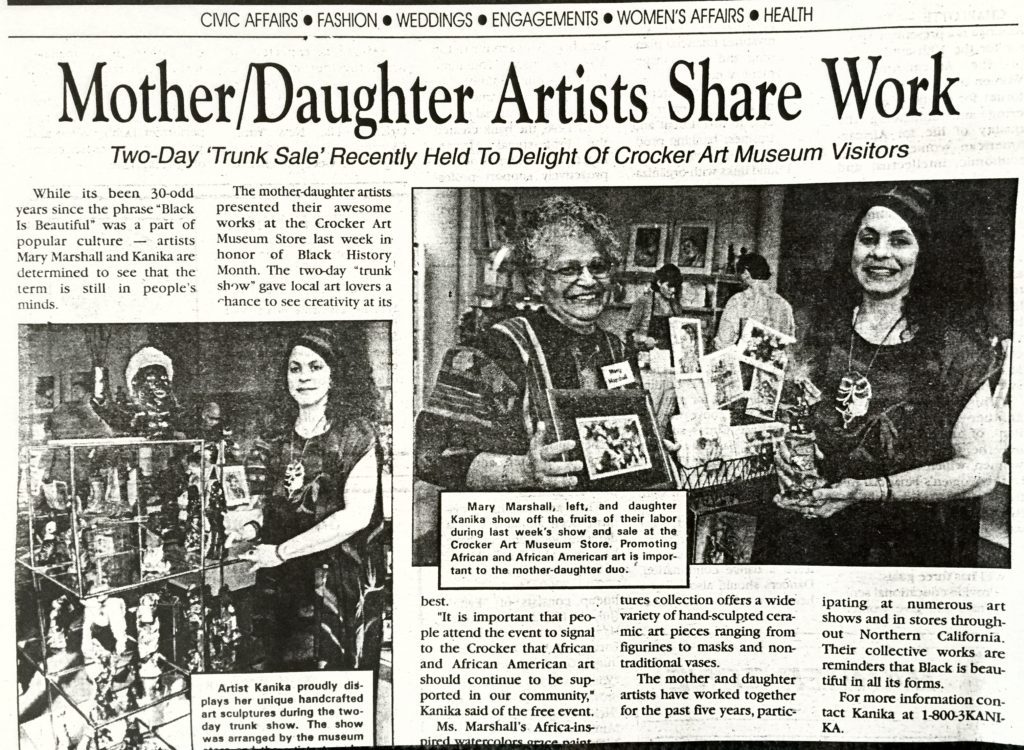
My mother, Mary Ellen Carter Marshall, was the middle of seven children. She was born during the Great Depression. Her large family lived with her grandparents and six other family members in Mount Vernon, Ohio. It was a cramped existence. When mom was 15, her family rented a house owned from the church. So much blessed space after years of four kids in one bed, two sharing a crib, and one sleeping on the floor! Their new house included a comfy couch in the front room. One end of that couch was “Mary’s corner” where mom drew portraits in her spare time, as part of an Art-by-Mail program.
Mom babysat and helped her mother with janitorial jobs at night. At 15, she got a job at Ringwalt’s department store trimming the windows. She planned the vignettes, dressed mannequins, and painted windows to entice customers to enter the store. Mom’s artistic achievements grew as the Mount Vernon High School Yearbook Art Director.
Mom doodled in newspapers and on scraps of paper. She and my future dad, Dr. Thomas Marshall, married in 1955. They drove from Ohio to Seattle, Washington, to San Diego then Stockton, California, while Dad completed his military obligations and medical training. In 1964, our family of five moved to Sacramento, California, where Dad started his Obstetrics & Gynecology business. Mom’s art hobby was clear wherever we moved: tile mosaic tables and wall hangings, drawings of us kids, and colorful abstract paintings hanging on our walls.
After my parents divorced, mom got a teaching credential as an elementary school teacher. Then she earned a Masters degree in Education Administration, serving as a principal. We three kids benefitted from living in the house of a creative artist. Though money was tight, mom always had pencils, ink pens, crayons, and once-used paper from the trash cans at school. She encouraged our artistic explorations by buying us $1-per-yard fabric so my sister and I could sew and customize our own clothes, inexpensive yarn to make hats and mufflers and, if we were good kids, felt pens and paints for birthdays. She encouraged us to be creative as a solution to our sometimes impoverished state.
I felt like an invisible girl. My beige complexion blended with my bland tan clothes. I tamed my long ebony hair in plaits or twists. I went days without speaking to anybody at school. Shy and extremely introverted, expressing myself artistically filled my void of confidence.
In sixth grade, I became interested in learning about the African side of my lineage. It was the tail end of the Civil Rights Era when the slogan “Black is Beautiful” was in vogue. As a teenager, I filled several sketch pads with images of Afro-Americans. Local schools and mom’s Alpha Kappa Alpha Sorority asked me to make posters for Black History Month and other programs. In 1979, I earned a Bachelor Degree from Sacramento State College, got married, and bought my first house.
I was tired of school and wanted to take some fun classes, like Spanish, botany, and ceramics from the esteemed Ruth Rippon. But I was horrible at wheel throwing! Wait a minute… I could carve African-oriented clay masks at home and sneak them into the kiln room. It was so satisfying. But life happened.
During the 1980s, I was too busy for art. I had two sons, earned a Masters degree, which led to several promotions at work, and we added a second story on to our house. During my second maternity leave, I was bored. I enrolled in pottery classes at Cosumnes River College. Mom and I took a couple of those classes together, but she ended up settling on watercolor as her preferred medium while I stuck with clay, eventually hanging 100 masks on the wall in our front room and several clay figurines draped in African fabric.
My husband asked, “Don’t you want to sell those masks?” Thus, I opened my Kanika African Sculptures business in 1993. We kids encouraged mom to open her Mary Marshall Watercolors business shortly thereafter. Unfortunately, my marriage didn’t last, and we lost our house. At 37, I was homeless with two children for months.
For the next several years, I HAD to sell my art at multiple art vendor shows each month to pay my bills, besides my full-time job. My acclaim grew over the years. I had thirty pieces of art in several galleries and museums, and my artistic creations earned over twenty awards from juried competitions.
A group of professional women artists asked me to join their private organization in 2008. We engaged in a technology transfer of sorts. The welder, Kristen Hoard, and painter, Michelle McKenzie, came to my clay studio to learn how clay could complement their art; Michelle is now a clay artist. I learned how to weld, using recycled steel to support the outdoor artworks the Blue Moon Gallery asked me to supply. I then became an outdoor artist, loving to combine steel, clay, wood and glass into kinetic sculptures that dance in the wind and gleam in the sunlight. Thanks, mom, for sharing your creative spice!